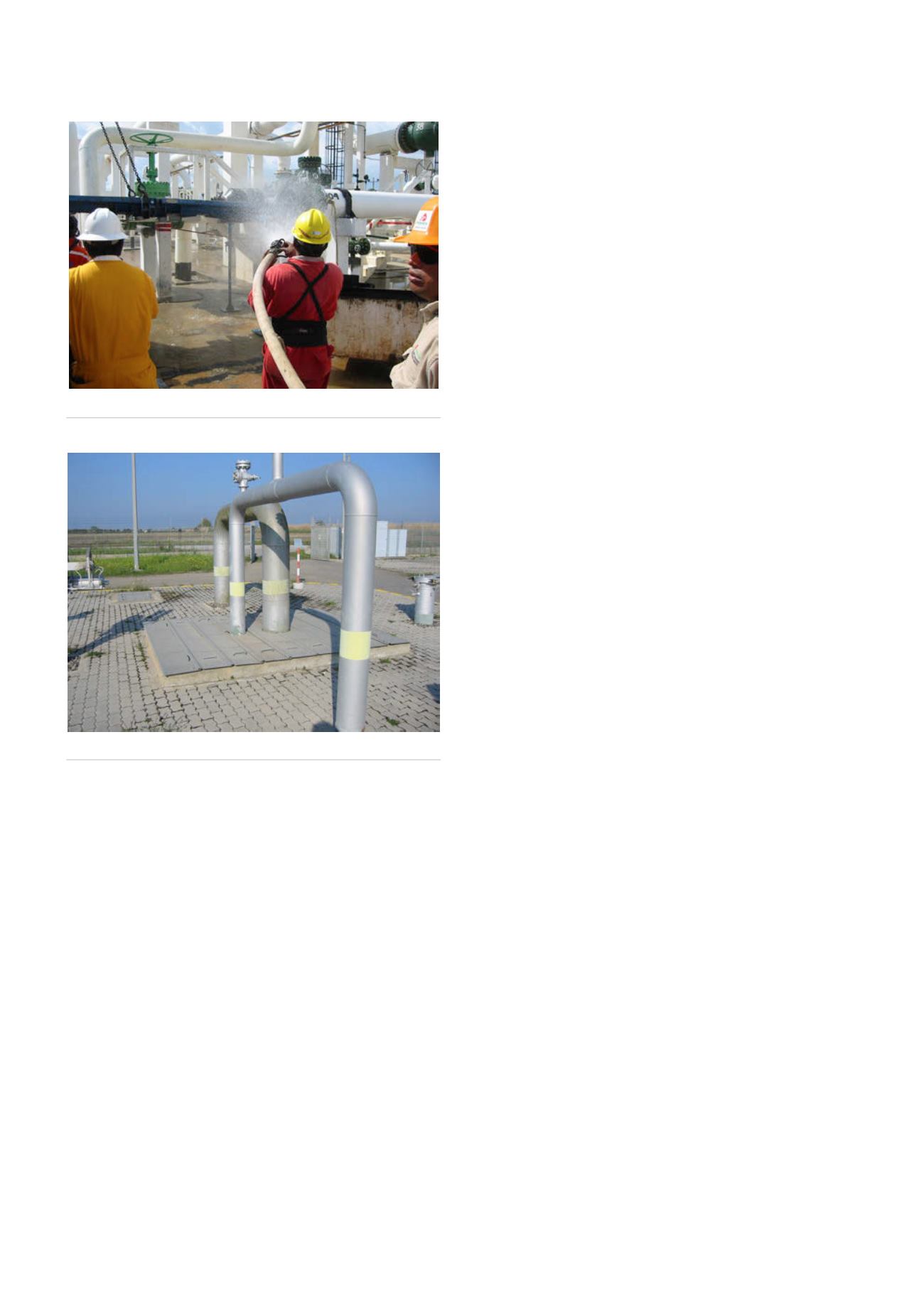
pigging records, and pig trap designs to name but a few. Once
all this information has been collated, it will provide a good
understanding of the pipeline configuration and hopefully give
you that warm fuzzy feeling that the pipeline can be pigged by
conventional free-swimming pigs.
If areas of this data are missing – which can sometimes be
the case in countries affected by war, terrorism or simply by
bad management of data – the second part of the planning
process (the site visit) can help identify any missing pieces.
Site visit
Now, I have lost count of the number of times I’ve been on
a pigging compound in my career, however the site visit is
a critical step in the process of assuring the line is or is not
piggable. Visiting the site is applicable not only for maintenance
pigging but also for inspection purposes, both of which can
have a different set of requirements. During the site visit the
engineer will need to check the pig trap dimensions, assuming
launch and receive traps are fitted with measurements and
notes recorded in relation to the following items:
)
)
Offtakes – especially back-to-back offtakes that could
stall a pig.
)
)
Kicker lines – used to launch the pig, are they sufficient in
diameter?
)
)
Bridle pipework – can the pressure be equalised either
side of the pig?
)
)
Pig signalling devices – intrusive type, when were they last
serviced?
)
)
Types of reducer – concentric or eccentric?
)
)
Valve configurations – are they set up for pigging?
)
)
Door mechanism type – when was it last serviced?
)
)
Does the pig trap have any internal fittings – slip trays to
aid pig loading, receive baskets for foam pigs, retractable
pins for sphere loading etc.?
)
)
Overbore diameter and length – wall thickness is an
important measurement as a heavy wall thickness will
reduce the overbore internal diameter making pig loading
difficult. Is its length sufficient to contain the pig?
)
)
Nominal pipe length – the requirements differ for launch
and receive traps.
)
)
Tees – do they have pig bars fitted?
)
)
Height and angle of the pig trap – offshore the pig traps
are often vertical to save space.
)
)
Is sufficient space available in front and to the side of the
pig trap for access?
)
)
Is sufficient space available above the pig trap? Are there
any overhead obstructions like electrical cables (often
found if the pig trap is in a busy city location) or steelwork
on offshore facilities?
)
)
Pipeline pressure – low pressure gas pipelines can cause
severe velocity excursions during pigging, which may
impact data integrity.
)
)
Flowrate – is there sufficient flow to propel the pig? Is the
velocity so high a bypass system is required on the pigs?
Once all of this information has been gathered, it is good
practice to photograph the site area, walk around the pig trap
and take photographs from all sides, highlighting any pipework
or obstacles located in its vicinity.
Logistics
Once you are confident with the information collected you
will need to envisage how the inline inspection (ILI) tool and
relevant associated support equipment will arrive in front of
the pig trap. Consider, for example, a 48 in. inspection pig that
could weigh upwards of 6 t, something which will require a
substantial crane along with transport to locate it in a suitable
position for loading in to the pipeline. This assumes your pig
trap is accessible by road.
For an offshore location you may need a dedicated
support vessel. How will you lift the pig from the boat to the
platform – will the same crane be utilised for lifting it to the
Figure 2.
Back-to-back tees.
Figure 1.
Hazardous products.
92
World Pipelines
/
FEBRUARY 2016


